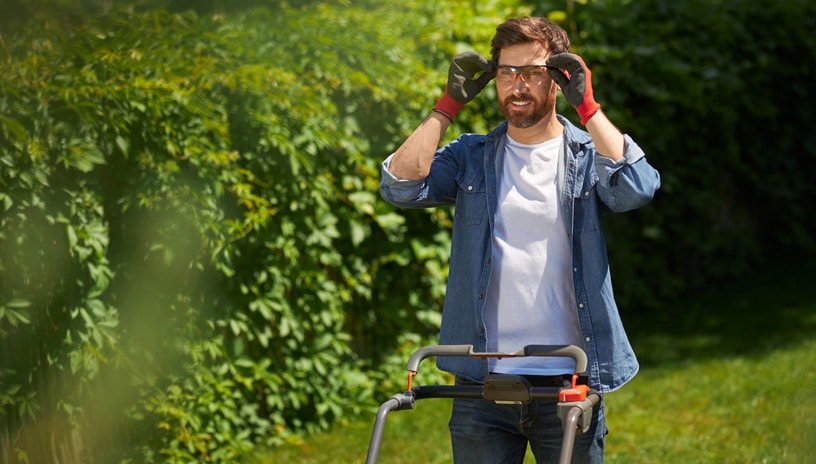Lawn Mowing Safety to Prevent Injuries

Respecting safety guidelines can help you prevent mowing injuries.
Why is Lawn Mowing Safety a Concern?
Each year, around 85,000 people in the U.S. suffer injuries from lawnmowers, with almost 6,400 resulting in serious injuries. Over 9,000 of these cases involve children under the age of 18. These statistics highlight the need to follow safety protocols when using lawnmowers and other lawn care equipment.
Common Lawn Mowing Hazards
Lawnmowers, while essential for maintaining our yards, can present significant risks if not used correctly. Lawnmowing accidents can result in injuries ranging from burns and deep cuts to amputated fingers and toes and broken bones.
Some common hazards include:
- Projectile Debris: Mower blades can propel objects like stones or sticks at high speeds, leading to injuries.
- Blade Contact: Direct contact with moving blades can cause severe lacerations and amputations.
- Overturning: Operating mowers on uneven terrain or slopes can result in tip-overs, posing injury risks.
- Burns: Engines and exhausts become extremely hot during operation, and contact can lead to severe burns.
Help Prevent Lawn Mower Injuries
Implement these safety measures to reduce your risk of lawn mower-related injuries:
Pre-Operational Checks:
- Read the Manual: Familiarize yourself with the mower's operation by thoroughly reading the instruction manual.
- Conduct Routine Maintenance: Ensure the motor and blades are in good repair annually and as needed throughout the mowing season.
- Inspect the Mower: Check and confirm all guards, shields, and safety devices are in place and functioning correctly before you mow – every time.
Maintenance and Repairs:
When maintenance or repairs are necessary, always:
- Disconnect Power: Ensure the mower is off and disconnected from any power source before cleaning or servicing.
- Use Tools, Not Hands: To remove debris from blades, use a stick or broom handle instead of your hands, even if the mower is off.
Handling Fuel Safely:
- Cool Down Before Refueling: Allow the mower to cool before adding fuel to prevent ignition of fumes or liquid fuel.
- Proper Storage: Store fuel in appropriate containers and keep it away from heat sources.
Safe Mowing Practices:
- Clear the Mowing Area: Remove objects like stones, toys, and branches from the lawn before mowing to prevent them from becoming projectiles.
- Slope Mowing: For push mowers, mow across slopes to reduce the risk of slipping under the mower. For riding mowers, mow up and down slopes to prevent tipping.
- Avoid Wet Conditions: Refrain from mowing wet grass, as it increases the likelihood of slipping and getting injured.
Personal Protective Equipment (PPE):
- Footwear: Always wear sturdy, closed-toe shoes; avoid sandals or barefoot mowing.
- Clothing: Wear long pants to protect your legs from debris.
- Hearing Protection: Gas-powered mowers can be loud; consider wearing ear protection to prevent hearing damage.
- Protective Eyewear: Use safety goggles or glasses that meet ANSI Z87 standards to shield your eyes from debris.
Child Safety:
- Keep Children Away: Ensure children are a safe distance from the mowing area.
- No Passengers: Never allow children or others to ride on the mower, even when it's not in use.
- Age Restrictions: Children should be at least 12 years old to operate a push mower and 16 for a riding mower.
Prioritize Lawn Mowing Safety for Yourself and Others
Lawn maintenance is a routine task that requires consistent vigilance to prevent injuries. The Moultrie County Health Department encourages all individuals to identify and avoid potential hazards before mowing. By adopting recommended safety measures, you can create a safer environment for yourself and those around you.

